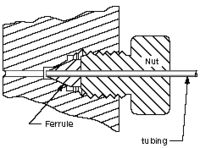
Photo from wikipedia
Resistive-pulse sensing with solid-state nanopores is a sensitive, label-free technique for analyzing single molecules in solution. To add functionality to resistive-pulse measurements, direct coupling of the nanopores to other pores… Click to show full abstract
Resistive-pulse sensing with solid-state nanopores is a sensitive, label-free technique for analyzing single molecules in solution. To add functionality to resistive-pulse measurements, direct coupling of the nanopores to other pores and nanoscale fluidic elements, e.g., reactors, separators, and filters, in the same device is an important next step. One approach is monolithic fabrication of the fluidic elements in the plane of the substrate, but methods to generate pores with circular cross sections are needed to improve sensing performance with in-plane devices. Here, we report a fabrication method that directly patterns nanopores with circular cross sections in series and in plane with the substrate. A focused ion beam instrument is used to mill a lamella in a nanochannel and, subsequently, bore a nanopore through the lamella. The diameter and geometry of the nanopore are controlled by the current and dose of the ion beam and by the tilt angle and thickness of the lamella. We fabricated devices with vertical and tilted lamellae and nanopores with diameters from 40 to 90 nm in cylindrical and conical geometries. To test device performance, we conducted resistive-pulse measurements of hepatitis B virus capsids. Current pulses from T = 3 capsids (∼31 nm diameter) and T = 4 capsids (∼35 nm diameter) were well resolved and exhibited relative pulse amplitudes (Δi/i) up to 5 times higher than data obtained on nanopores with rectangular cross sections. For smaller pore diameters (<45 nm), which approach the diameters of the capsids, a dramatic increase in the pulse amplitude was observed for both T = 3 and T = 4 capsids. Two and three pores fabricated in series further improved the resolution between the relative pulse amplitude distributions for the T = 3 and T = 4 capsids by up to 2-fold.
Journal Title: ACS nano
Year Published: 2022
Link to full text (if available)
Share on Social Media: Sign Up to like & get
recommendations!